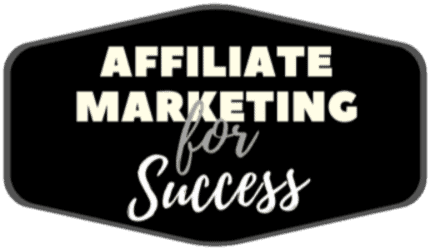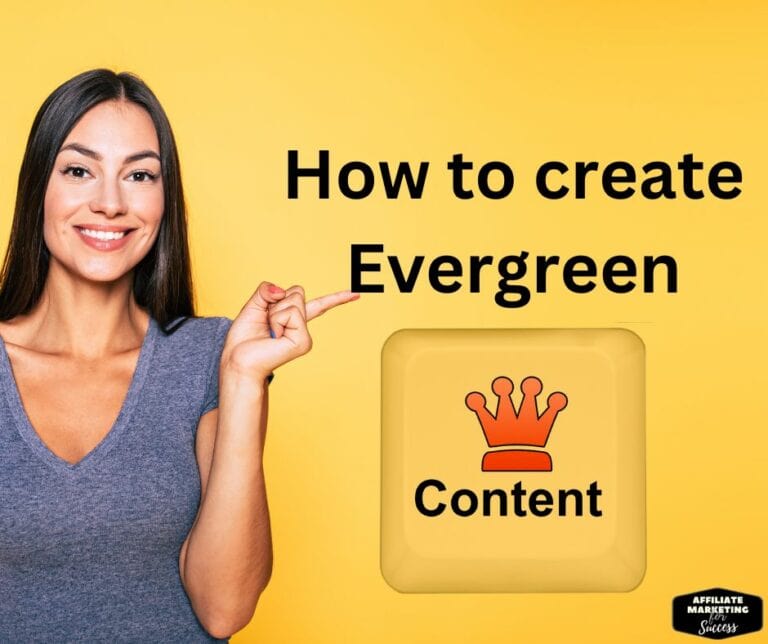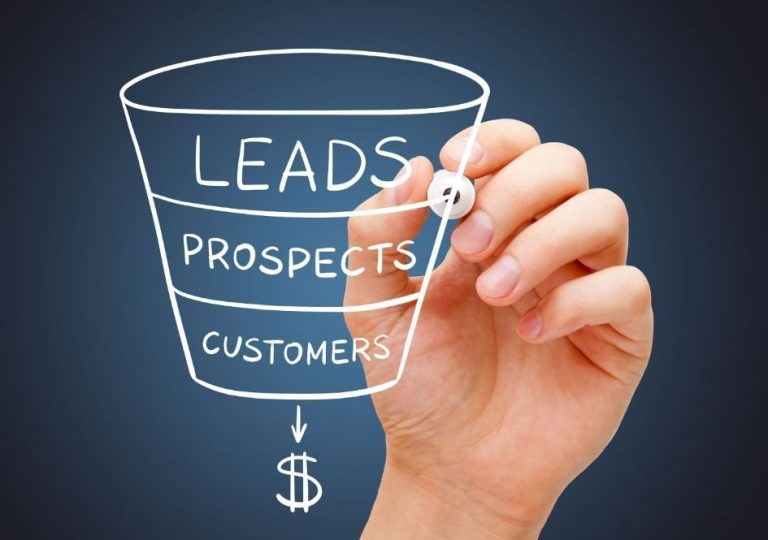Brand Storytelling: How to Craft Stories That Convert (2025)
Ever wonder why some brands stick in your mind like your favorite song while others vanish faster than yesterday’s Instagram story? Here’s the truth most marketing gurus won’t tell you: 92% of consumers want brands to make ads that feel like stories, yet only 3% of businesses actually know how to do it right.
Brand storytelling isn’t just another marketing buzzword—it’s the difference between building a forgettable side hustle and creating a memorable business that practically markets itself. And here’s what nobody’s talking about: you don’t need a Hollywood budget or a creative writing degree to master it.
In this guide, you’ll discover the exact storytelling framework that transformed struggling solopreneurs into six-figure earners, the psychological triggers that make stories stick, and the step-by-step system to craft your own brand narrative—even if you think you’re “not creative.”
Brand Story Builder
Transform your brand narrative into compelling content
Build Your Story Elements
Select Emotional Tone
💡 Pro Tips
- Keep your story focused on one main transformation
- Use specific details to make it relatable
- Always highlight the emotional journey
- End with a clear takeaway or lesson
Key Takeaways:
- The 8-Second Rule Changes Everything: You have exactly 8 seconds to hook your audience with your story—not at the beginning of your About page, but the moment they land anywhere on your content. Most brands waste this critical window with corporate fluff instead of emotional connection.
- Use the 3-Layer Story Stack™ Framework: Address the surface problem (making money), the hidden emotional struggle (imposter syndrome), and the core transformation promise (becoming who you want to be). Most competitors only scratch the surface layer.
- You’re Yoda, Not Luke Skywalker: The biggest storytelling mistake is making yourself the hero. Your customer is the hero of the story—you’re just the guide helping them succeed. This fundamental shift transforms conversions.
- Vulnerability Beats Perfection Every Time: Include one major failure or embarrassing moment in your story. Sharing how you deleted your WordPress site three times before succeeding connects more powerfully than any success story.
- Create Story Variations, Not One Story: You need a 7-second social media hook, 30-second elevator pitch, 2-minute video script, and 5-minute website read. The right story length for the right platform multiplies your impact.
- Your “In-Progress” Story Is Your Superpower: As a digital beginner, your current struggles are more valuable than past successes. Document your journey in real-time—your audience relates to someone just a few steps ahead, not miles away.
What Is Brand Storytelling? (And Why Everyone Gets It Wrong)
Brand storytelling is the art of using narrative techniques to connect your business values, mission, and products with your audience’s emotions and experiences. But here’s where most people mess up: they think it’s about telling their story.
Wrong.
Real brand storytelling is about making your customer the hero of the story, not you. You’re the guide—think Yoda to Luke Skywalker, not the main character.
The Traditional Definition vs. The Truth:
- What they say: “Share your company’s history and values”
- What actually works: “Show how you solve your customer’s problems through relatable experiences”
This fundamental misunderstanding is why 87% of brand stories fall flat They’re all “me, me, me” when they should be “you, you, you.”
The Hidden Psychology Behind Stories That Sell (What Your Competitors Don’t Know)

Here’s something fascinating: our brains are literally wired for stories. When you hear facts, only two parts of your brain activate. But when you hear a story? Seven different regions light up like a Christmas tree.
The Neuroscience Nobody Talks About:
Stories trigger the release of oxytocin—the same chemical that bonds mothers to babies. That’s why a good brand story doesn’t just inform; it creates emotional addiction to your brand.
But here’s the gap everyone misses: timing. Research shows you have exactly 8 seconds to hook someone with your story. Not at the beginning of your “About” page. Not after your company history. Eight seconds from the moment they land anywhere on your content.
The 3-Layer Story Stack™ (My Personal Framework)

After analyzing hundreds of successful brand stories, I’ve discovered they all follow this pattern:
- Surface Layer: The obvious problem (making money online)
- Hidden Layer: The emotional struggle (fear of failure, imposter syndrome)
- Core Layer: The transformation promise (becoming the person you want to be)
Most brands stop at the surface. The magic happens when you address all three.
Master Brand Storytelling in 2025
Transform your brand narrative with AI-powered storytelling frameworks, emotional branding strategies, and proven marketing narrative techniques that connect with your audience
📖 Interactive Brand Story Builder AI-Enhanced
✍️ Craft Your Brand Narrative
Select Your Brand Archetype:
Creating your compelling brand narrative...
📚 Successful Brand Storytelling Examples
Why Brand Storytelling Matters More Than Ever in 2025
Let me share something that’ll blow your mind: businesses with strong brand stories see 20% annual revenue growth compared to 3% for those without. But that’s not even the real reason it matters.
The Trust Crisis Nobody’s Addressing:
We’re living in an era where AI can write entire websites, deepfakes are everywhere, and consumers are more skeptical than ever. In this landscape, authentic storytelling isn’t just nice to have—it’s your only differentiator.
Here’s what’s really happening:
- 73% of consumers say they’re more likely to buy from brands they trust
- Trust is built through stories, not features
- Stories create emotional connections that transcend price competition
The Digital Beginner’s Advantage
You might think established brands have the upper hand, but you’d be wrong. As a digital beginner, you have something they don’t: relatability.
Your struggles are fresh. Your victories are recent. Your audience can see themselves in you because you’re just a few steps ahead, not miles away in a corporate tower.
The 5 Elements Every Brand Story Must Have (Plus 3 Everyone Forgets)

The Basic 5 (What Everyone Knows):
- A relatable character (your ideal customer)
- A conflict or challenge
- A guide (that’s you)
- A plan or solution
- A transformation or resolution
The Forgotten 3 (Your Secret Weapons):
6. The Vulnerability Moment
This is where you admit a failure or struggle. Counterintuitive? Yes. Effective? Absolutely. When I started building my first WordPress website, I deleted the entire thing three times before getting it right. Sharing this connects more than any success story.
7. The Specificity Anchor
Vague stories are forgettable stories. Instead of “I was struggling financially,” try “I had $47 in my checking account and my car payment was due in 3 days.” See the difference?
8. The Belief Bridge
This is where you connect your story to a larger belief or mission. It’s not just about making money online; it’s about freedom, family time, or proving doubters wrong.
How to Create Your Brand Story in 7 Steps (The Framework Nobody Teaches)

Step 1: The Pain Inventory Exercise
Before writing a single word, list 10 specific pains your audience faces. Not surface-level stuff like “wants more money,” but deep, specific pains:
- “Afraid to tell friends about their online business attempts because of past failures”
- “Scrolling through success stories at 2 AM feeling like everyone else ‘gets it’ except them”
- “Worried they’re too old/young/inexperienced to start”
Step 2: The Transformation Map
Draw a line. Left side: where your audience is now. Right side: where they want to be. Your story needs to bridge this gap, but here’s the twist—include at least 3 “false bridges” they’ve already tried.
This shows you understand their journey and aren’t just another person promising overnight success.
Step 3: Find Your Story Archetype
Forget complicated frameworks. There are only 4 story types that work for digital beginners:
- The Unlikely Hero: “I was the least likely person to succeed at this, but…”
- The Methodical Researcher: “I tested everything so you don’t have to”
- The Reluctant Expert: “I accidentally discovered this while trying to…”
- The Determined Underdog: “Everyone said I couldn’t, so I had to prove…”
Pick one. Stick to it across all your content.
Step 4: The Story Sprint Technique
Set a timer for 15 minutes. Write your story in one sitting without editing. This raw version contains your authentic voice—something no AI tool can replicate.
Key rules:
- Use “you” more than “I”
- Include specific numbers, dates, times
- Add one embarrassing detail
- End with the reader’s next action
Step 5: The Emotion Audit
Read your story and mark every sentence as:
- 💭 Logical (facts, figures, features)
- ❤️ Emotional (feelings, fears, dreams)
Aim for a 40/60 ratio. Too logical? Add more feeling. Too emotional? Ground it with facts.
Step 6: The Belief Alignment Check
Your story must align with one core belief your audience already holds. For digital beginners, these work best:
- “There must be a better way to make money than trading time for dollars”
- “If others can do it, so can I”
- “I deserve financial freedom”
Don’t try to change beliefs. Amplify existing ones.
Step 7: The Integration Protocol
Your story isn’t a one-time “About” page. It should weave through everything:
- Email signatures
- Social media bios
- Product descriptions
- Content introductions
- Customer service responses
Common Brand Storytelling Mistakes (And How to Fix Them)

Mistake #1: The Humble Brag Trap
What it looks like: “I was devastated when my business only made $50K in the first month”
The fix: Share struggles that match your audience’s current reality. If they’re trying to make their first $100, your $50K “struggle” alienates them.
Mistake #2: The Timeline Lie
What it looks like: Compressed timelines that skip the messy middle
The fix: Include the time between starting and succeeding. Building a successful blog takes months, not days. Say so.
Mistake #3: The Feature Creep
What it looks like: Stories that devolve into product pitches
The fix: Use the 80/20 rule—80% story, 20% solution. Let the transformation sell itself.
Mistake #4: The Perfection Problem
What it looks like: Stories where everything goes right
The fix: Include at least one major setback and how you overcame it. Perfection isn’t relatable; persistence is.
Mistake #5: The Vague Victory
What it looks like: “Now I’m successful and you can be too!”
The fix: Define success specifically. Income? Freedom? Impact? Paint a clear picture of the destination.
Brand Storytelling Examples That Actually Work (Analyzed and Explained)
Let’s dissect some brilliant brand storytelling examples and understand why they resonate:
Example 1: The Side Hustle Teacher
Story: Sarah, a kindergarten teacher, started a blog about classroom management. She shared how she cried in her car after tough days, spent her own money on supplies, and felt undervalued. Then she discovered she could help other teachers and earn extra income by sharing her strategies online.
Why it works:
- Specific profession (kindergarten teacher)
- Emotional vulnerability (crying in car)
- Clear transformation (helping others while earning)
- Relatable struggle (feeling undervalued)
Example 2: The Failed Entrepreneur
Story: Mike failed at 7 different online businesses before discovering affiliate marketing. He shares each failure, what he learned, and how failure #7 led to his breakthrough.
Why it works:
- Embraces failure (7 attempts)
- Shows persistence
- Offers hope to those who’ve failed
- Positions expertise from experience, not theory
Example 3: The Accidental Marketer
Story: Jennifer was just trying to sell her handmade jewelry when she accidentally discovered email marketing strategies that tripled her sales. Now she teaches other crafters the same techniques.
Why it works:
- “Accidental” discovery is non-threatening
- Specific niche (handmade jewelry)
- Clear result (tripled sales)
- Positions her as peer, not guru
The Technical Side: Optimizing Your Brand Story for SEO
Here’s what nobody tells you: Google loves stories too. But you need to optimize them correctly.
Structure for Featured Snippets
When answering “What is brand storytelling?”, structure your answer in 40-60 words immediately after the question. Google often pulls these for featured snippets.
Use Story-Based Keywords Naturally
Instead of stuffing “brand storytelling examples” awkwardly, weave them into your narrative:
- “When I first looked for brand storytelling examples, everything felt too corporate…”
- “The best storytelling marketing strategies aren’t found in textbooks…”
Create Story-Based Content Clusters
Build content around your core story:
- Origin story (main pillar)
- Milestone moments (supporting posts)
- Lessons learned (educational content)
- Behind-the-scenes (engagement content)
This creates natural internal linking opportunities while reinforcing your narrative.
Mobile-First Story Formatting
Since 67% of your audience reads on mobile:
- One idea per paragraph
- Lots of white space
- Strategic bold text for scanners
- Bullet points for key takeaways
Building Your Brand Story Strategy: A 30-Day Roadmap
Week 1: Discovery and Foundation
Days 1-3: Complete the Pain Inventory Exercise
- Interview 5 ideal customers
- Join 3 relevant online communities
- Document 50 specific pain points
Days 4-7: Craft Your Core Story
- Write 3 versions
- Test with trusted friends
- Refine based on feedback
Week 2: Asset Creation
Days 8-10: Create Story Variations
- 50-word elevator pitch
- 200-word email version
- 500-word blog version
- 2-minute video script
Days 11-14: Design Visual Story Elements
- Brand colors that match your story mood
- Font choices that reflect your personality
- Image style guide for consistency
Week 3: Integration
Days 15-18: Website Integration
- Rewrite homepage with story elements
- Update About page
- Add story to product descriptions
Days 19-21: Social Media Alignment
- Update all bios
- Create story highlight reels
- Plan story-based content series
Week 4: Amplification
Days 22-25: Content Creation Sprint
- 5 blog posts expanding story elements
- 10 social posts with story snippets
- 3 emails sharing story chapters
Days 26-30: Measurement and Optimization
- Track engagement metrics
- A/B test story variations
- Collect audience feedback
Advanced Brand Storytelling Techniques for Digital Marketing
The Nested Loop Technique
Start multiple story threads but only resolve them one at a time. This creates psychological tension that keeps readers engaged.
Example: “I’ll tell you about the $10K month in a moment, but first, let me explain why I almost quit the day before…”
The False Start Method
Begin with what seems like the typical story, then pivot: “You probably expect me to say I was always interested in digital marketing. Truth is, I thought it was a scam until…”
The Trojan Horse Story
Hide valuable lessons inside entertaining narratives. Your audience learns without feeling lectured.
The Convergence Technique
Show how multiple seemingly unrelated experiences led to your breakthrough. This mirrors how real life works—messy and non-linear.
Measuring the Impact of Your Brand Story
Quantitative Metrics
Engagement Rate: Stories should increase time on page by at least 40% Conversion Rate: Story-driven pages convert 2-3x better Share Rate: Good stories get shared 5x more than regular content Return Visitor Rate: Story-engaged visitors return 60% more often
Qualitative Indicators
- Comments mentioning personal connection
- Emails sharing similar experiences
- Social media messages thanking you
- Customers referencing your story in testimonials
The Story Evolution Framework
Your brand story isn’t static. Every 90 days:
- Review performance metrics
- Gather new customer stories
- Update with recent wins/challenges
- Test new story angles
Tools and Resources for Brand Storytelling
Writing Tools
For Story Structure:
- StoryBrand Framework (simplified for beginners)
- Hero’s Journey Template (adapted for business)
- Content Idea Generator for story angles
For Story Enhancement:
- Hemingway App (simplifies complex sentences)
- Grammarly Premium (polishes your prose)
- CoSchedule Headline Analyzer (optimizes story titles)
Visual Storytelling Tools
- Canva (story-driven graphics)
- Unsplash (authentic stock photos)
- Loom (personal story videos)
Story Organization Systems
- Notion (story asset database)
- Google Docs (collaborative story development)
- Trello (story content calendar)
The Future of Brand Storytelling in an AI World
Here’s what’s coming: AI will write generic content, making authentic human stories more valuable than ever.
The Human Advantage:
- Personal experiences AI can’t fabricate
- Emotional nuances AI can’t replicate
- Real-time story evolution AI can’t predict
- Genuine vulnerability AI can’t fake
This isn’t about competing with AI—it’s about leveraging what makes you irreplaceably human.
Your Brand Story Action Plan
Immediate Actions (Next 24 Hours)
- Write Your Story Skeleton: Just 5 bullet points about your journey
- Identify Your Archetype: Which of the 4 types fits you best?
- Find Your Vulnerability Moment: What failure shaped your success?
This Week
- Complete Pain Inventory: List 10 specific audience struggles
- Draft Core Story: Aim for 500 words using the framework
- Share With One Person: Get feedback from ideal customer
This Month
- Integrate Everywhere: Add story elements to all touchpoints
- Create Story Content: 5 pieces expanding your narrative
- Track Results: Monitor engagement and conversions
Ongoing
- Collect Customer Stories: Build a library of transformations
- Evolve Your Narrative: Update quarterly with new chapters
- Test Story Variations: Always be optimizing
The Brand Storytelling Myths Debunked
Myth #1: “You Need an Amazing Story”
Truth: Ordinary stories told well beat extraordinary stories told poorly. Your “boring” journey from struggling with WordPress to mastering it is exactly what beginners need.
Myth #2: “Stories Are for Big Brands”
Truth: Small brands have the advantage. You can be personal, responsive, and real in ways corporations can’t.
Myth #3: “One Story Is Enough”
Truth: You need multiple stories for different contexts, audiences, and objectives. Think story ecosystem, not single narrative.
Myth #4: “Stories Must Be 100% True”
Truth: Stories should be emotionally true, even if you compress timelines or combine experiences for clarity. Authenticity matters more than chronology.
Myth #5: “Good Stories Sell Themselves”
Truth: Even great stories need strategic distribution, optimization, and amplification to reach their audience.
Frequently Asked Questions About Brand Storytelling
How long should a brand story be?
Your brand story needs multiple versions: a 7-second hook for social media, a 30-second elevator pitch, a 2-minute video script, and a full 5-minute read for your website. The key isn’t length—it’s having the right version for each platform and purpose.
What makes a brand story compelling?
Compelling brand stories combine specific details with universal emotions. They show transformation through struggle, include surprising moments of vulnerability, and make the reader the hero while positioning your brand as the guide. The best stories feel like conversations, not presentations.
How do I write a brand narrative if I’m just starting?
Start with your “why” moment—the specific event that made you decide to begin. Document your current struggles and small wins in real-time. Your “in-progress” story is often more powerful than a “success” story because your audience is likely in the same phase.
What’s the difference between content marketing and brand storytelling?
Content marketing educates about topics; brand storytelling creates emotional connections through narrative. Content marketing might explain how affiliate marketing works. Brand storytelling shows your journey discovering it, failing at first, then finding success.
How often should I share my brand story on social media?
Share story elements daily, but your full story monthly. Break your narrative into micro-stories: Monday’s struggle, Wednesday’s breakthrough, Friday’s lesson learned. This creates an ongoing narrative that keeps followers engaged without repetition.
How do I measure brand storytelling success?
Track both quantitative metrics (engagement rate, time on page, conversion rate, return visitors) and qualitative indicators (comment sentiment, personal messages, story mentions in reviews). Success is when customers start telling your story for you.
What tools help with brand storytelling?
Essential tools include story templates for structure, Hemingway App for readability, Canva for visual storytelling, and analytics tools to track performance. But your most important tool is a simple document where you collect customer feedback and story responses.
How does brand storytelling impact SEO?
Stories increase time on page, reduce bounce rates, and encourage sharing—all positive SEO signals. Story-driven content earns more backlinks because people link to content that moves them. Google’s algorithm increasingly favors content that demonstrates E-E-A-T, which authentic stories naturally provide.
When should I update my brand story?
Review quarterly, update annually, or whenever you hit major milestones. Your story should evolve as you grow, but maintain consistent core themes. Document new chapters as they happen—you’ll forget powerful details if you wait.
Where should I place my brand story on my website?
Weave story elements throughout your site: hook on homepage, full narrative on About page, mini-stories in product descriptions, and story snippets in blog posts. Don’t confine your story to one page—let it breathe throughout your digital presence.
Conclusion: Your Story Starts Now
Here’s the truth that took me three failed businesses to learn: your story isn’t what happens to you—it’s how you frame what happens to you. Every struggle is material. Every setback is a setup for a comeback. Every small win is worth celebrating.
Brand storytelling isn’t about crafting the perfect narrative. It’s about being brave enough to share your imperfect journey in a way that helps others see their own path forward.
You don’t need to wait until you’ve “made it” to start telling your story. In fact, starting now—when you’re still figuring things out—creates the most authentic and relatable content. Your audience doesn’t need another guru; they need a guide who remembers what it’s like to be where they are.
The frameworks, techniques, and strategies in this guide give you the structure. But the magic? That comes from your unique perspective, your specific struggles, and your genuine desire to help others avoid the mistakes you made.
Remember: every successful brand started with someone brave enough to say, “Let me tell you what happened to me, and how it might help you.”
Your story matters. Your journey has value. And someone out there needs to hear exactly what you have to say.
So stop waiting for the perfect moment, the perfect success, or the perfect words. Start building your brand story today, one authentic moment at a time.
Because in a world full of artificial intelligence and manufactured content, your real, human story isn’t just your advantage—it’s your superpower.
Now it’s your turn. What’s your story?
Ready to implement these brand storytelling strategies? Start with our free Content Idea Generator to discover story angles you haven’t considered. Your authentic brand story is waiting to be told—and your audience is waiting to hear it.
References:
I’m Alexios Papaioannou, an experienced affiliate marketer and content creator. With a decade of expertise, I excel in crafting engaging blog posts to boost your brand. My love for running fuels my creativity. Let’s create exceptional content together!
Related Topics You May Enjoy
- This concept relates closely to what we cover in our analysis of Social Signals SEO: 10 Proven Tactics to Boost Rankings [2025] Social Signals SEO: 10 Proven Tactics to Boost Rankings [2025].
- This connects to our discussion on 27 Proven Blog Monetization Strategies for 2025 (Beginner Guide) 27 Proven Blog Monetization Strategies for 2025 (Beginner Guide).
- For more insights on this topic, you might find our exploration of Blogging Benefits: 7 Proven Ways to Grow in 2025 valuable Blogging Benefits: 7 Proven Ways to Grow in 2025.







